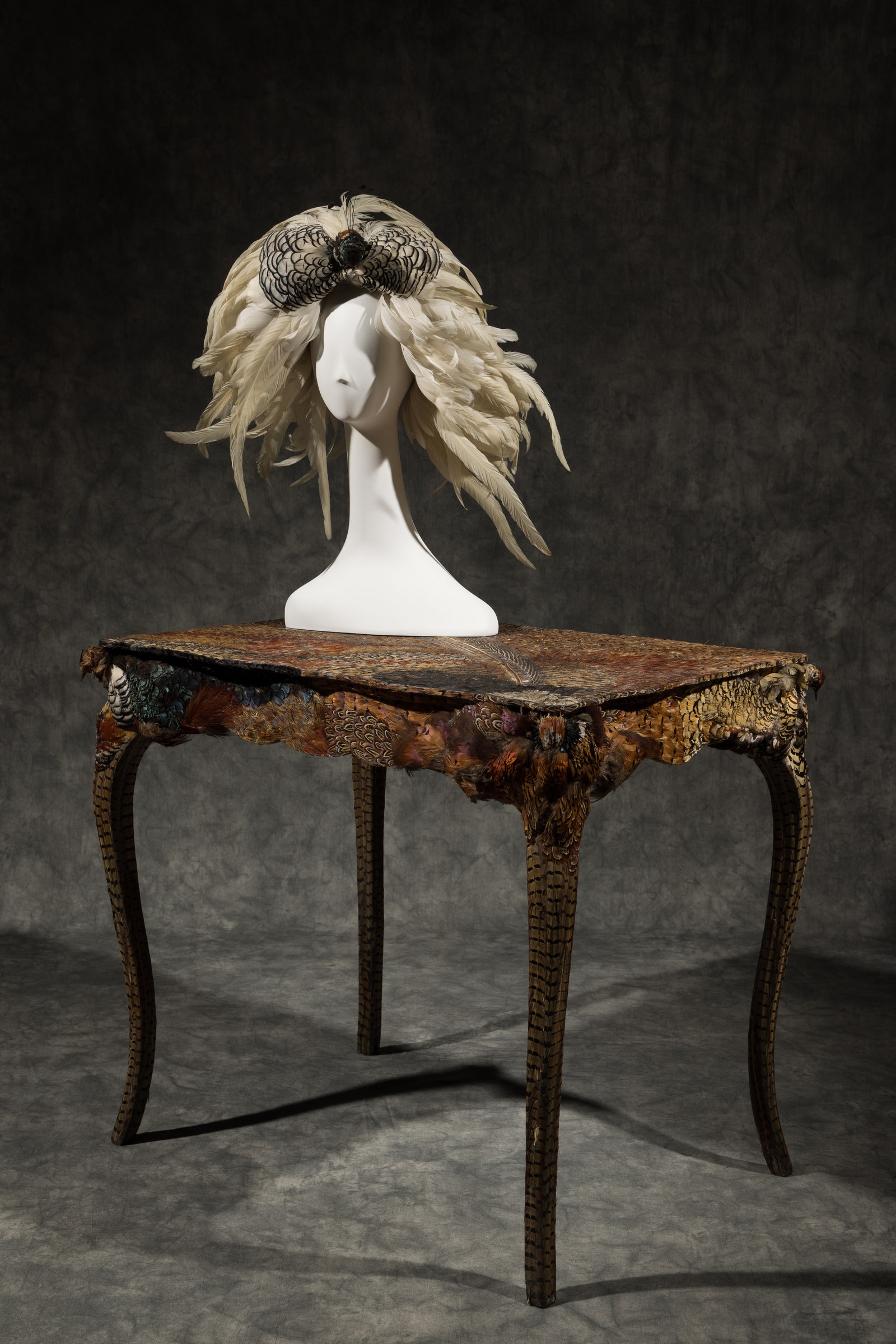Given the news cycle, that’s a particularly refreshing approach to a subject that Hill uses the long and narrow opening gallery to introduce and problematize. Wunderkammers—or, more colloquially, cabinets of curiosities—can be traced back to the Renaissance and pre-date even the earliest museums. Used for study, wunderkammers also signaled status as they were primarily maintained by the aristocracy and the elite. Containing objects from all over the world, these collections often had ties to colonialism. Their contents, Hill writes, can generally be divided into two categories, “naturalia and artificialia (natural materials and human-made artifacts). Demonstrating the former is a snake embroidered dress by Serendipity juxtaposed with a historic engraving of a slithery reptile, and the latter an Alexander McQueen scarf depicting a grouping of cameos.
As Hill engaged with her subject, studying objects and catalogues of collections, she realized that wunderkammers weren’t just a place where the wild things were, but also a home to fashion. When wunderkammers were dismantled and distributed, many of the sartorial artifacts went to anthropological or natural history museums. In the 19th and 20th centuries, “when art museums slowly started to collect fashion, they weren’t looking at these cabinet objects. They were looking at the clothing that was made for the elite in North America and Europe,” notes Hill, so there was this big divide that we’re still experiencing and still talking about.”
You’ll find work by big name designers of today (Rei Kawakubo) and way back when (Jeanne Lanvin, Worth, Fortuny) on display alongside many less familiar pieces. The curator says it “was really freeing” to be “thinking by theme or category, rather than [by] designer or by material.” Ten themes are explored throughout the exhibition at the center of which stands a huge bird cage filled with feathered fashions and a plume-covered table by Bill Cunningham. The cage can be seen as a metaphor for a wunderkammer—a designated place of containment. Another section, dedicated to the kunstkammer, features objects that depict artworks, including an Arcimboldo dress from Comme des Garçons’s spring 2018 show. Hill explained that the painting that appears on the dress, a portrait in flora, fruit, and vegetables of Rudolf II, had been commissioned by the emperor for his own wunderkammer.
Slide right to see installation views of the exhibition.
Small windows are cut into some of the exhibition “rooms,” allowing different views of the pieces and encouraging engagement. The senses are engaged by the recorded sounds of dresses, the ability to touch a toile replica of a many-pocketed Molyneux dress from 1948, and pull-out drawers containing sparkling jewels and objets d’art. The mind is challenged by the “What Is It?” section, and time is required to take in the trompe l’oeil display where timed lights fade in and out. Sensory deprivation sparks interest, explained Hill, who explained that “a lot of the research behind this exhibition—both in the objects that I’ve selected and the way that we have incorporated certain design elements into the show—were actually based on studies of the psychology of curiosity, which does really overlap with the cabinets. Other curiosity triggers include scale (things that are very large or very small), familiarity, or its inverse: novelty. These ideas take root via the objects. “I also wanted to bring people into the physical realm,” the curator says.
















